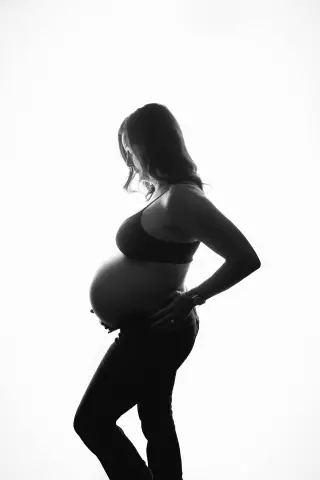- Author Rachel Wainwright [email protected].
- Public 2023-12-15 07:39.
- Last modified 2025-11-02 20:14.
39 weeks pregnant

At the 39th week of pregnancy, 37 full weeks have passed since the conception of the baby, according to the lunar calendar is the last tenth month of pregnancy.
Changes in the fetus
The time comes when the fetus at 39 weeks gestation is ready to be born at any time. He occupies a constant position in the uterus, and will no longer be able to change it before childbirth. The part of the body that is presented (located closer to the exit - this is either the head or the pelvic end) is already lowered into the small pelvis. In the event that a child in the abdomen at 39 weeks gestation takes a transverse position (this is very rare, but it happens), natural childbirth is impossible, and you cannot do without a cesarean section.
The bones of the fetal skull at this time are soft, pliable, between them there are seams and fontanelles made of even more pliable connective tissue. Thanks to the sutures and fontanelles, during the passage of the head through the birth canal, it is configured and somewhat reduced in size. Immediately after childbirth, the head may look slightly elongated or altered because of this, but after a few days the bones return to their normal position.
In length, the child has grown to 51 - 52 cm, he weighs from 3200 to 3600 g. Weight and height indicators depend on the conditions in which he grew up in utero, and on the physique of his parents.
The appearance of the fetus at 39 weeks of gestation corresponds to a full-term newborn. The baby is in the uterine cavity in the embryo position, which will be characteristic for him for some time after birth. The movements of the fetus in the abdomen at 39 weeks of gestation are regular and more targeted - the baby can play with his fingers or the umbilical cord, feel the face and body, the walls of the uterus. It is very important to control the activity of the baby by his movements, in 12 hours there should be at least 10 of them.
39 weeks of gestation is the period during which the testicles in boys must descend into the scrotum. If this did not happen, then we can talk about one-sided or two-sided cryptorchidism.
Changes in a woman's body at 39 weeks of gestation
At 39 weeks of gestation, precursors of childbirth may appear:
- Discharge of the mucous plug;
- Recurrent tension in the lower abdomen;
- Lowering the abdomen.
If the belly does not go down earlier, then this can happen at 39 weeks of pregnancy. Now the height of the fundus of the uterus above the pubis is about 34 - 35 cm. The woman notes in this connection an improvement in well-being and relief of breathing, since the uterus ceases to press on the diaphragm with the same force.

The release at 39 weeks of gestation from the genital tract of a fairly large amount of mucus, in consistency and appearance resembling egg white, is evidence of the discharge of the mucous plug. Sometimes streaks of blood are mixed with it, this is a sign that the cervix has begun to open. The discharge of amniotic fluid is manifested by the release of a large amount of colorless and odorless fluid from the vagina at 39 weeks of gestation. If the fetus is experiencing a lack of oxygen in utero or an infection has joined, then the waters may be greenish and have an unpleasant odor.
In connection with the lowering of the presenting part of the fetus, the pregnant woman may begin to be disturbed by constipation and frequent urination. At this stage, it is important not to miss the onset of a urinary tract infection. Normally, against the background of increased urination, there should be no pain at 39 weeks of gestation.
Despite the fact that the pregnancy is coming to an end, at 39 weeks of gestation there is a threat of developing late gestosis. Its main features are:
- Deterioration of health;
- Headaches;
- Increased blood pressure;
- Swelling;
- Too much weight gain.
When the birth is very close, the pregnant woman may have an attack of diarrhea. The woman's body thus prepares for childbirth, so you should not be afraid of this. The onset of labor can proceed according to one of two scenarios - either contractions begin, or the amniotic fluid will first leave.
A pregnant woman at 39 weeks is most often already familiar with training contractions; the beginning of labor is characterized by a shortening of the time between them and the regularity of occurrence.
YouTube video related to the article:
Found a mistake in the text? Select it and press Ctrl + Enter.






